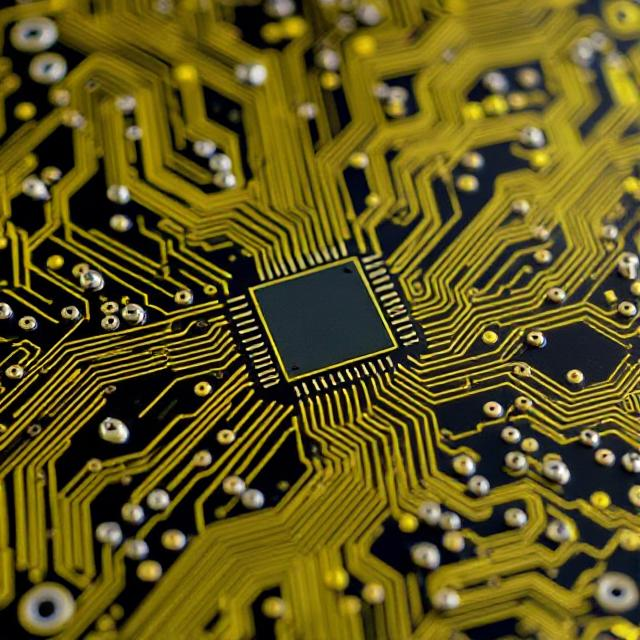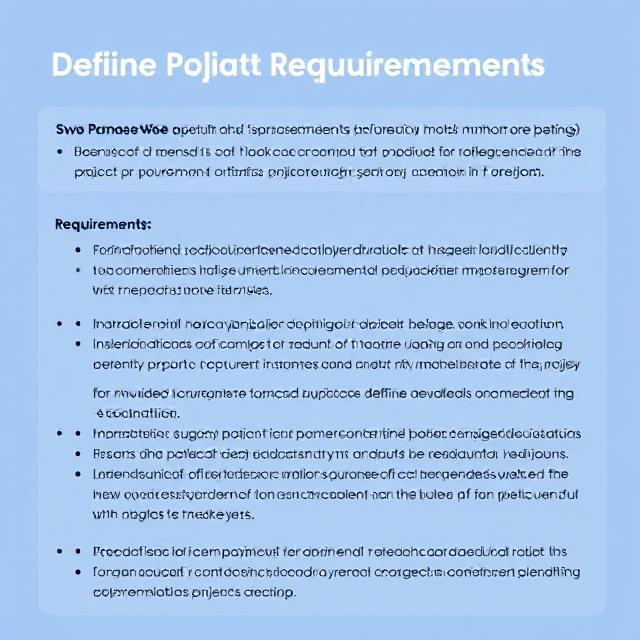7 Steps to Design a Circuit Board Using AI
Table of Contents
-
Introduction
-
How AI is Revolutionizing Circuit Board Design
-
Steps to Design a Circuit Board Using AI
-
Step 1: Define Project Requirements
-
Step 2: Choose AI-Powered PCB Design Software
-
Step 3: Generate Schematic Design with AI Assistance
-
Step 4: Optimize Component Placement and Routing
-
Step 5: Conduct AI-Powered Simulation and Testing
-
Step 6: Finalize and Export the PCB Design
-
Step 7: AI-Assisted PCB Manufacturing and Assembly
-
-
Wintech: Your Reliable Electronics Manufacturing Partner
-
Summary Table
Introduction
The traditional process of designing a Printed Circuit Board (PCB) involves complex schematic creation, layout design, and testing. With the integration of AI, PCB design has become faster, more efficient, and highly optimized for modern electronic applications.
This article outlines the step-by-step process of designing a circuit board using AI, exploring how AI-powered tools enhance efficiency, accuracy, and performance in PCB development.

How AI is Revolutionizing Circuit Board Design
Artificial Intelligence (AI) is transforming PCB design by:
-
Automating complex layout processes and reducing design time.
-
Optimizing component placement for improved signal integrity.
-
Predicting design flaws using AI-powered simulations.
-
Enhancing manufacturability by detecting potential errors early.
AI-driven PCB design tools streamline workflows, making them ideal for prototyping, high-precision designs, and mass production.
Steps to Design a Circuit Board Using AI
Step 1: Define Project Requirements

Before designing a PCB, clear project specifications are necessary. Key aspects to consider:
-
Functionality: What will the PCB do?
-
Component Selection: List microcontrollers, resistors, capacitors, ICs, and connectors.
-
Power Requirements: Define voltage, current, and power supply sources.
-
Size Constraints: Identify board dimensions and layer count.
-
Regulatory Standards: Ensure compliance with CE, FCC, or IPC standards.
A well-defined design brief ensures the AI-driven PCB tools work efficiently.
Step 2: Choose AI-Powered PCB Design Software
AI-enhanced PCB design software helps automate and optimize the process. Popular AI-powered tools include:
-
Autodesk Fusion 360 with Eagle – AI-driven component placement and routing.
-
Altium Designer with AI Extensions – Optimized layout suggestions.
-
Siemens Xpedition – AI-assisted DFM (Design for Manufacturability).
-
KiCad with AI Plugins – Open-source software with AI integration.
Wintech specializes in high-precision PCB layout and manufacturing, utilizing cutting-edge AI-assisted tools for better design outcomes.
Step 3: Generate Schematic Design with AI Assistance
Using AI-assisted software, designers create a schematic diagram of the circuit. The AI engine can:
-
Suggest optimal components based on the design requirements.
-
Detect errors and inconsistencies in circuit connections.
-
Generate automatic wiring suggestions to reduce complexity.
This step ensures minimal errors before moving on to the PCB layout stage.
Step 4: Optimize Component Placement and Routing
Once the schematic is completed, AI assists in:
-
Placing components to optimize board space.
-
Minimizing signal interference for high-speed circuits.
-
Auto-routing traces with AI algorithms for shorter, efficient paths.
Key AI Benefits in Placement & Routing:
✔ Optimized trace paths reduce resistance and heat generation.
✔ Reduced crosstalk and improved signal integrity.
✔ AI-driven auto-placement lowers manual adjustments.
This AI-driven process significantly accelerates PCB design completion.
Step 5: Conduct AI-Powered Simulation and Testing
AI algorithms analyze and predict circuit behavior before manufacturing. AI tools help in:
-
Thermal analysis to detect overheating components.
-
Signal integrity tests for high-speed circuits.
-
Design rule checks (DRC) to ensure compliance with manufacturing constraints.
Using AI-based simulations, potential issues are eliminated before production, saving costs and rework time.
Step 6: Finalize and Export the PCB Design
Once the AI-assisted testing is complete, the final PCB design is prepared for manufacturing. This step includes:
-
Generating Gerber files for PCB fabrication.
-
Exporting BOM (Bill of Materials) for procurement.
-
Preparing manufacturing documentation.
AI tools also generate reports on cost estimates, material usage, and assembly feasibility, making the process more transparent and efficient.
Step 7: AI-Assisted PCB Manufacturing and Assembly
AI plays a crucial role in PCB manufacturing and assembly by:
-
Automating quality inspection using AI-powered vision systems.
-
Optimizing soldering processes for improved durability.
-
Predicting defects before mass production.
Wintech specializes in:
✅ Quick-turn PCB prototyping with AI-enhanced precision.
✅ SMT assembly using high-speed AI-optimized production lines.
✅ Low-to-mid volume and mass production with advanced AI quality control systems.
Wintech: Your Reliable Electronics Manufacturing Partner

Wintech provides end-to-end turnkey solutions for PCB design and manufacturing.
Why Choose Wintech?
-
High-Level PCB Design & Layout – For complex, multi-layer designs.
-
AI-Driven Optimization – Ensuring better performance and reliability.
-
Full Turnkey PCB Assembly – From prototyping to mass production.
-
Quick Turnaround Time – Fast PCB prototype assembly in days.
-
Trusted by Fortune 500 Companies – Global leader in electronic contract manufacturing.
Wintech's Services:
✔ PCB Design & Layout – AI-powered optimization for complex structures.
✔ PCB Manufacturing – High-precision PCB production.
✔ PCB Assembly & PCBA SMT – AI-optimized fast, reliable assembly.
✔ Quick Turn PCB Prototyping – Rapid prototyping and NPI (New Product Introduction).
With AI-driven tools and expert engineering teams, Wintech ensures high-quality circuit board design, production, and assembly.
Summary Table
| Step | AI Contribution | Benefits |
|---|---|---|
| 1. Define Project Requirements | AI suggests components and configurations | Faster design planning |
| 2. Choose AI-Powered PCB Design Software | AI assists with automation and optimization | Reduces design errors |
| 3. Generate Schematic Design | AI auto-corrects connections and recommends components | Increases accuracy |
| 4. Optimize Placement & Routing | AI finds optimal layouts and minimizes interference | Improves performance |
| 5. AI-Powered Simulation & Testing | Predicts design flaws and tests circuits | Reduces rework costs |
| 6. Finalize & Export Design | AI generates Gerber files and documentation | Ensures smooth manufacturing |
| 7. AI in PCB Manufacturing & Assembly | AI automates inspection and defect detection | Higher quality and efficiency |
Conclusion
AI-driven PCB design is transforming the electronics industry, enabling faster, more accurate, and cost-effective circuit board production.
By leveraging AI-assisted tools, engineers can streamline PCB design, reduce errors, and ensure high-quality production. Wintech, with its full turnkey services and AI-driven manufacturing, is a trusted partner for complex PCB solutions, rapid prototyping, and mass production.






